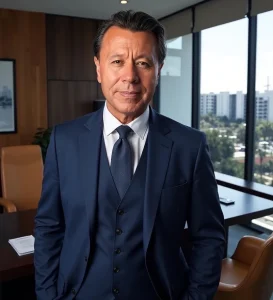
The Art of Disaster Recovery Management
When disaster strikes be it a Hurricane, Wildfire, Earthquake, or a Cyberattack the clock starts ticking. The pressure mounts, decisions must be made, and recovery efforts mobilized. In this moment, disaster recovery management reveals its true nature: not a rigid science governed solely by data protocols, but a fluid, adaptive art form requiring instinct, empathy, and on the ground strategic wisdom.
Science could not be enough. It gives us models, frameworks, and forecasts. It provides risk matrices, contingency plans, and recovery timelines. These are vital. But anyone who’s ever worked in the field, like climbing rooftops during a crisis knows that reality doesn’t always follow the manual. Power lines fall in unanticipated places. Shelters reach capacity. Local politics, cultural nuances, and human behavior often defy the spreadsheet.
The best-laid plans often require real-time improvisation. The role of Human Judgement in Disaster Recovery demands leadership, emotional intelligence, and rapid decision-making under often chaotic conditions. Many in the industry call it the stat of being in “CAT Mode”. A field coordinator might have to choose between clearing a road for utility trucks or escorting a family to a shelter, both urgent, neither in the plan.
Recovery managers must weigh competing priorities, manage limited resources, and navigate unpredictable terrain. No algorithm can fully account for the human complexity of recovery.
Storytelling, not just statistics in an effective disaster recovery also hinges on the right communication, another art form. Leaders must convey urgency without panic, inspire collaboration, and rebuild trust in institutions. They must listen to affected communities, not just deliver aid.
Sometimes the difference between a successful recovery and a failed one lies in how people feel they’ve been treated.
It takes to be creative in times of chaos. In the most devastated areas, conventional solutions often aren’t available. This is where creativity and innovation become a life-saving tool such as Starlink. Turning a bus into a mobile clinic. Using a cruise ship as a temporary shelter. Resorting to social media to reunite families. Building temporary climate-controlled shelters out of unexpected materials. These moments of improvised brilliance rarely come from a checklist, they come from people thinking like artists.
In Disaster Management the science will always be essential to disaster recovery. A new bread emerges with ARC’s Blue Ocean Strategy concierge approach to Art-Science balance. Innovation saves the day for the Subrecipients, without a doubt and it is rarely found in a Grant Manual. Without the art of flexibility, empathy, and human insight, science can’t adapt fast enough to meet the needs of a dynamic disaster. The best recovery managers are those who can blend both: grounding their work in evidence but moving through crisis like a jazz or a salsa musician with enticing rhythm, immediate responsiveness, and a touch of soul bringing reconstruction to completion with Task Orders and Advance Funding through Regulated Funding Firms utilizing the FEMA Public Assistance Grant (FEMA PA) as Collateral.
Disaster Recovery through FEMA PA is not just a science of compliance. It is also an art, one that demands flexibility, judgment and deep community awareness.
Call us TODAY (800) 481-3607 (407) 967-1950
Email: ARCNews@alternativerecoveryconsulting.com
About the Author:

Hernando a graduate of UCONN with a postgraduate degree from the Insurance Institute of America, is a Court qualified storm damage assessment expert witness, former General Adjuster serving the National Flood Insurance Program is a dynamic leader with extensive experience in Commercial and Residential insurance property claims having served in both sides of the fence, natural disaster response, and strategic planning. With 42 years of expertise, he has guided organizations through high-stakes scenarios, including catastrophic events, by designing and executing effective response strategies that ensure business continuity and customer support. A co-author of ARC’s Blue Ocean Strategy implementation, Hernando has a proven ability to identify innovative solutions and untapped opportunities, driving operational excellence and sustainable growth from a unique and extraordinary perspective. He is passionate about fostering resilience through immediate critical emergency response solutions, mitigating risks, and delivering proactive storm hardening strategies that help organizations navigate the complexities of natural disaster recovery and beyond.
